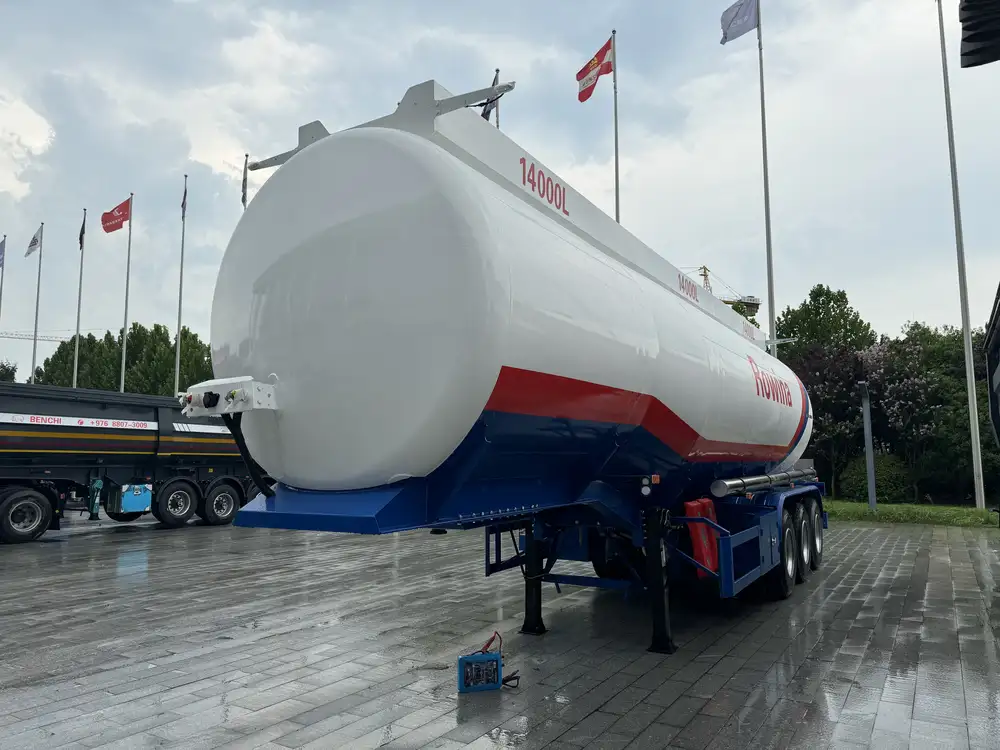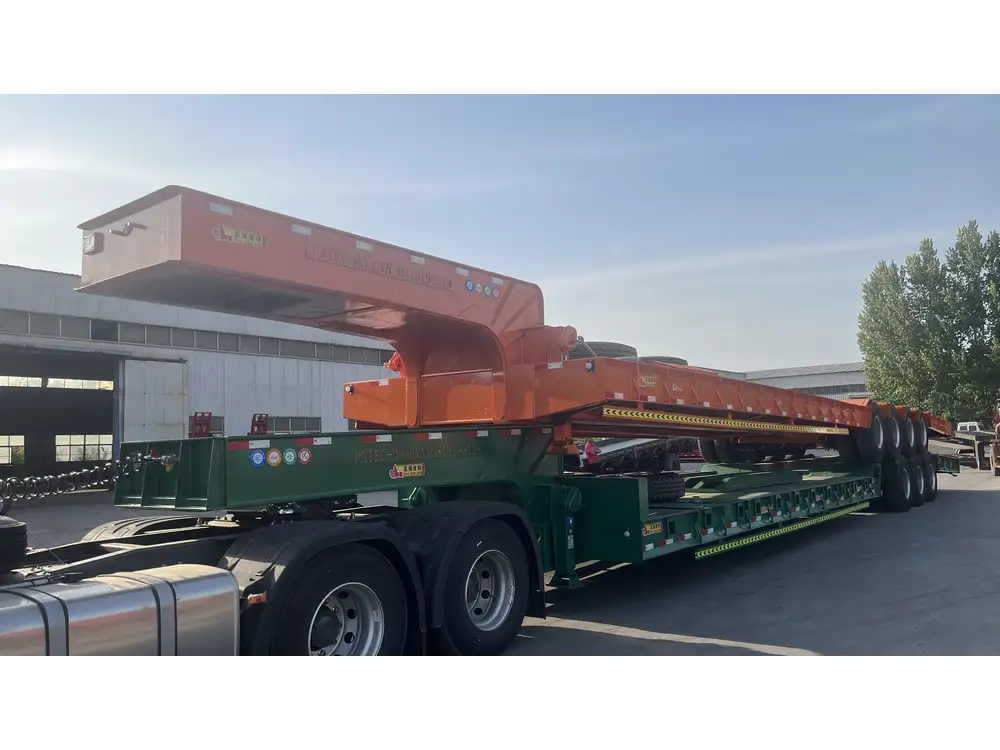Flatbed semi trailers are a crucial component of modern freight transport, widely used across various industries for their versatility and ability to carry diverse loads. However, one frequently asked question persists: how wide is a flatbed semi trailer?
Flatbed Semi Trailer Dimensions
To begin, it’s essential to understand the standard dimensions governing flatbed semi trailers. The width of flatbed trailers is typically standardized to facilitate efficient transportation and adherence to safety regulations.
| Aspect | Standard Measurement |
|---|---|
| Maximum Width | 8.5 feet (102 inches) |
| Typical Length | 48 feet or 53 feet |
| Height | Varies (around 4.5 to 5 feet) |
| Weight Capacity | Up to 48,000 lbs |
Maximum Width Regulations
The maximum legal width for flatbed semi trailers on public roads in the United States is 8.5 feet. However, some exceptions arise for specialized loads requiring wider trailers, often necessitating special permits for transportation.

Common Trailer Sizes
Flatbed semi trailers come in several sizes, each catering to specific cargo types and transport needs. The most common lengths of flatbeds are 48 feet and 53 feet; however, widths remain consistent primarily at 8.5 feet.
Types of Flatbed Trailers
When discussing the width of flatbed semi trailers, it’s essential to consider the different types available. Each type has its unique design considerations that influence their width and load capacity.
1. Standard Flatbed Trailers
These are the most commonly used flatbed types. They are generally 8.5 feet wide and are suitable for transporting machinery, bulk goods, and building materials.

2. Conestoga Flatbed Trailers
This type integrates a movable tarp system, providing protection to cargo during transit. They maintain the standard width of 8.5 feet but add functionality for covered transport.
3. Step Deck Trailers
Step deck trailers, also known as lowboys, have a lower deck height, which allows for transporting taller cargo while adhering to height regulations. Their width remains standard, but they are often designed wider to accommodate the load.
4. Drop Deck Trailers
These trailers allow cargo to be loaded at a lower height, enhancing stability during transport. While the width is typically standard (8.5 feet), they provide additional space for larger or heavier items.

Regulations Impacting Dimensions
Understanding the width of flatbed semi trailers is not just about numbers; it involves navigating a complex landscape of regulations, which can vary from state to state.
| Regulation Source | Description |
|---|---|
| Federal Motor Carrier Safety Administration (FMCSA) | Sets maximum dimensions for safe transport. |
| State Transportation Departments | Each state may have specific rules regarding wide loads. |
| Local Ordinances | May impose additional restrictions based on local infrastructure. |
Importance of Adhering to Width Regulations
Adhering to the standard width is crucial for safety on the roads. Wider loads require additional flagging and permits to ensure safe navigation through lanes and intersections. A breach of these regulations can lead to severe fines or even accidents, emphasizing the importance of understanding and respecting these dimensions.
Factors Influencing Trailer Width Choice
Several logistical and operational factors must be considered when determining the suitable width for flatbed semi trailers.

1. Type of Load
The nature of the load plays a significant role. Oversized cargo may necessitate a wider trailer but comes with additional regulatory requirements.
2. Transport Routes
The geography and infrastructure of transport routes can influence width decisions. Urban areas with narrow roads may have more stringent width regulations.
3. Weight Distribution
Ensuring proper weight distribution is critical for safety and efficiency. Consequently, some operators may choose wider trailers to maintain balance for particular loads.

Comparisons: Flatbed vs. Other Trailers
It is beneficial to compare flatbed trailers with other types of trailers in terms of width and versatility.
| Trailer Type | Max Width | Versatility | Typical Cargo Types |
|---|---|---|---|
| Flatbed Trailers | 8.5 feet | Very versatile; accommodates various loads | Bulky machinery, construction materials, vehicles, and equipment. |
| Enclosed Trailers | 8.5 feet | Limited; better for protected transport | High-value items, perishables, or sensitive materials that require protection from the elements. |
| Reefer Trailers | 8.5 feet | Specialized for temperature-sensitive goods | Perishable food items, pharmaceuticals, and other temperature-controlled products. |
| Lowboy Trailers | 8.5 feet | Primarily for heavy equipment and machinery | Construction vehicles, heavy machinery, and other oversized equipment needing a low deck for transport. |
Considerations for Choosing the Right Flatbed Width
Choosing the right flatbed width extends beyond mere compliance with regulations. Operators must consider multiple elements to maximize operational efficiency.
1. Load Compatibility
Certain loads may require a wider trailer, especially oversized or awkwardly shaped goods. Thorough evaluation of the load dimensions is crucial to fitness for transport.

2. Cost Implications
Wider trailers may incur higher operational costs—permit fees, fuel consumption, and potentially increased maintenance. A careful cost-benefit analysis must precede decisions regarding width.
3. Route Planning
Considering the transport routes and their restrictions can help avoid fines and delays. Some regions have specific roads for wider loads, so planning is key.
4. Safety and Stability
Choosing the right width is paramount in maintaining a low center of gravity, which is essential for stability when turning corners or navigating rough terrains.

The Future of Flatbed Semi Trailers: Innovations in Width and Capacity
As the logistics sector evolves, advancements in trailer design will likely emerge. Innovations may include adjustable widths, enhanced technology for cargo monitoring, and improved safety features. Industry stakeholders must keep abreast of these trends to optimize transport capabilities.
Sustainable Practices
Furthermore, the shift towards sustainability necessitates reevaluating trailer designs to reduce carbon footprints while enhancing capacity and width. Innovations in materials and design will play a crucial role in this transformation.
Conclusion: Navigating the Complexities of Flatbed Semi Trailer Width
In summary, navigating the width of flatbed semi trailers is a multifaceted venture that requires a nuanced understanding of specifications, regulations, and operational complexities. With an industry standard width of 8.5 feet, the importance of adhering strictly to regulations cannot be overstated, especially when considering the diverse challenges faced in transport logistics.
Choosing the appropriate flatbed trailer width involves more than mere compliance; it demands awareness of load types, route obstacles, operational costs, and safety implications. With advancements continually reshaping the logistics landscape, staying informed and agile will be essential for all stakeholders.
By equipping ourselves with this knowledge, we can strategically enhance our transport operations, ensuring safety, efficiency, and compliance with all regulatory frameworks. Whether you are a manufacturer or a logistics company, understanding the intricacies of how wide is a flatbed semi trailer is essential for optimizing your fleet and standing out in a competitive marketplace.



